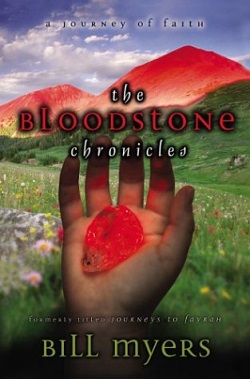 by Bill Myers
by Bill Myers
Conditional Recommendation: Christian allegorical adventures involving a fantastical land with fantastical creatures where Nathan, Denise, and Joshua grow from nonbelievers to mature Christians.
Genre: Christian Fantasy/Christian Allegory
The Bloodstone Chronicles is a collection of four books about the same set of characters that have adventures in the alternate dimension of Fayrah. Each story provides an interesting look at some aspect of who God is and the Christian life. I touch on each of the four books in more detail below. Each book is sold separately and can stand on its own, but I recommend getting this collection because the stories are short and fit together, each lending more meaning to the next. This series have been published under several different names: Journeys to Fayrah, Bloodstone Chronicles, and Imager Chronicles.
I recommend reading these stories together as a family because each provides many, many topics for discussion.
Most of my reviews remain spoiler free, but in order to discuss the interesting spiritual content, the following contains spoilers for each book.
With echoes of The Pilgrim’s Progress, The Chronicles of Narnia, and Hind’s Feet in High Places, this engaging allegory for the Christian life follows its characters from unbelief, to conversion, to spiritual growth and maturity. The Bloodstone Chronicles is more than entrancing—it’s a sparkling-fresh depiction of our journey toward the heart and character of God.
Aspects of the allegory might be confusing for a young reader and it would be helpful to have some explanation and discussion to ensure clarity. Also, there are some alarming fantastical situations that may upset sensitive readers like in book four, The Tablet, where people are harming themselves and others because no one feels pain. These stories are more like The Pilgrim’s Progress than The Chronicles of Narnia—much more allegory heavy if you know what I mean.
Joshua – Nathan’s older brother who loves science, logic, and popularity. He’s always been kind to Denise.
The Weaver – a worker of Imager who weaves together the tapestries of each person’s life.
The Merchant of Emotions – brother to the Illusionist, he has a machine that can generate emotions. Once someone is sprayed by its mist, the person is controlled by whichever emotion the Merchant had selected.
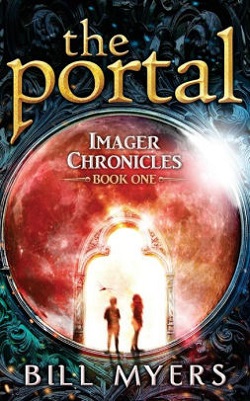 Book One: The Portal (103 pages)
Book One: The Portal (103 pages)
This book introduces the world and I warn you to prepare for weirdness! Give yourself some time to acclimate to the strange names, ways of speaking and the allegorical world. You’ll catch on, I promise! And once you do, you’ll enjoy the characters and their struggles and triumphs.
In this book, we follow Nathan and Denise as they meet the three Fayrahnians and travel to the Kingdom of Fayrah and then to the Kingdom of Keygarp when Nathan gets into trouble with the deceptive Bobok who lures him away from the group by promising him that he was destined for greatness and could have everything he desired. Nathan becomes trapped in Bobok’s menagerie where Bobok has collected and entranced creatures of all kinds. They’re kept in bondage by their own greed in a cone-like structure that is energized by actions of greed and selfishness. The Fayrahnians and Denise must rescue Nathan from himself before time and their strength runs out.
The creatures and qualities of Fayrah reveal to Nathan and Denise how flawed they are compared to the character and design of Imager. The Fayrahnians refer to them and their world as “Upside Downers” and the “Upside-Down Kingdom.” A clever way to illustrate how backwards the world is because of sin, especially compared to God. The world is constantly missing the mark of reality as determined by God—consistently calling bad things good and good things bad. This “Upside Down” concept will appear and be further developed in the rest of the books.
Another element that will be important for the rest of the series is the Stream. It’s a river of words that flows through the Kingdom of Fayrah that originates from Imager’s mouth. The Word of God as a river! The characters can swim in it, drink it, carry it in canteens, pour it over their faces, and use it to discern truth from lies, reality from illusion, and to set themselves “right-side up.”
In book one, the kids are essentially made aware of their sins and introduced to a different way to be. They’re exposed to good friends, to truth, and to sacrifice. They first hear of Imager, the God-figure of these stories. They’re behaviors and thinking are challenged in light of their new exposure to what is good and true. Nathan and Denise don’t get saved in this book, but the seed is planted.
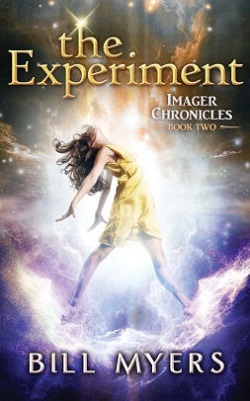 Book Two: The Experiment (99 pages)
Book Two: The Experiment (99 pages)
This book is the most memorable for me of the four books because it contains some of the best spiritual illustrations that cause me to think about God in a new way.
In this adventure, Denise and Joshua, Nathan’s older brother, travel to Fayrah where they visit the Center where Imager lives, meet the Weaver, and then are separated—Denise to spend time with “the machine” that Imager had made for her so she could come to understand his love, and Joshua to spend time with a super computer to find “scientific proof” that Imager exists. The seeds that were planted in book one are being watered in book two.
I love their visit with the Weaver and the allegory of a person’s character and life as a tapestry that’s woven together with purpose and care. It presents an interesting concept about how the dark threads—the hardships or pain—add depth and strength to the rest of the colors in a person’s tapestry. In the same way, God works our trials together for good and even produces changes in us (perseverance, character, and hope) through them. Another take away could be how intimately God knows us and our lives—compare this allegory to what the Bible says in Psalm 139.
Where the Weaver and tapestries are interesting, the story of the machine is impactful. Denise is told to create with a machine that was designed to make life. I will not be able to explain it here—the book does it so well!—but Denise creates life in her image, naming them Gus and Gertie, befriends them, and loves them to the point of being willing to sacrifice herself to save them. The allegory of God as Creator in relation to His creation is brilliant and provides many topics for discussion:
- The relationship between the creator and the created.
- Free will—its freedoms and its consequences.
- Gertie choosing to struggle to do what Denise has not asked her to do, but believing that Denise told her to do it.
- Gus chooses to be fascinated with a part of his world where he can’t hear Denise’s voice.
- Gus and Gertie pursuing their own wills but not seeing that it’s killing them.
- Denise’s efforts to communicate with and save Gus and Gertie from their mistaken beliefs and dangerous fascinations.
Joshua’s time spent with the super computer is intriguing and presents another way of thinking about the vastness of God compared to man, and though I enjoyed it, those scenes weren’t given as much development and time as Denise’s experiment. This book from beginning to end is definitely worth reading and discussing!
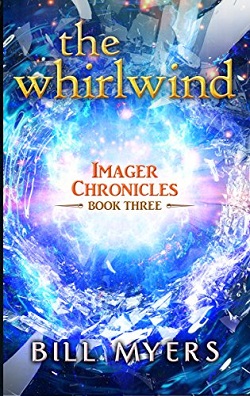 Book Three: The Whirlwind (100 pages)
Book Three: The Whirlwind (100 pages)
This book packs a great deal of content! Finally, we’ve reached the point in the story where all three kids come to be saved, and each must go through their own process and make the choice for themselves. This book has a lot of fantasy elements, all used to illustrate a point and play on spiritual realities as indicated in Scripture.
In the first book, Bobok targets Nathan and traps him in his menagerie of greed; in the second book, the Illusionist targets Denny by disrupting her creations; and in this book, Bobok and the Illusionist team up to target Joshua by playing on his desire to be perfect and popular. They convince Joshua to accompany them to the Kingdom of Perfection where he must compete through various levels by perfecting his physical appearance. Only then will he be able to move on to the Realm of Popularity, where one becomes what others think of them, and then to the Sea of Justice, where one gets exactly what they deserve.
While Josh is with Bobok and the Illusionist, Denny and Nathan learn of his peril and seek to find a perfect person to go to the Sea of Justice to save Josh, because only the perfect can go there and not be destroyed. Denny and Nathan go to the mall and to a church and, using their canteen of Imager’s words, are surprised and horrified to see the truth of people revealed. The stream water poured over their eyes allows them to see people as they really are as Imager sees them rather than how they appear to be on the outside. A mom becomes a queen, a polished businessman becomes a beggar, a reverend becomes a wolf. This fantastical phenomenon illustrates the spiritual reality of our identity—we are who God says we are, God is the source of every person’s identity, and often this reality isn’t what it first appears to be. This allegory is worth discussion.
Fayrahnians refer to salvation as being “re-breathed” and as the greatest honor an Upside Downer could have. Though salvation in real life doesn’t always come with an emotional experience nor does it need to, in this book the experience is powerful, emotional, and fantastical. Again, as an allegory should, it portrays the concepts of salvation and spiritual realities in a physical manifestation. For example, to become “re-breathed,” Denny must step into a whirlwind and the pool of melted bloodstone. The wind is Imager’s breath and the bloodstone is the part of Imager that made a sacrifice long ago. When she does this, all darkness, guilt, everything bad about her is drained from her body and as she breathes in, the whirlwind fills her with Imager’s breath. She is washed in the blood. She is made new. She has acquires a new identity. She now has Imager inside of her. She has become perfected in the eyes of Imager. All wonderful truths of salvation!
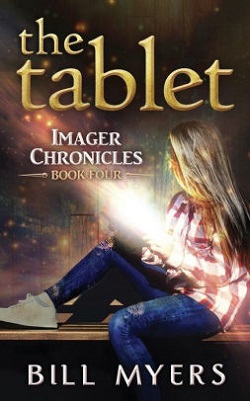 Book Four: The Tablet (101 pages)
Book Four: The Tablet (101 pages)
This is another story with a lot of content and much to discuss. I’ll cover my highlights in a moment, but first I must mention that this is the most intense book of the collection. The suspense is ongoing and the rising action climbs higher and higher with circumstances getting more and more desperate for Denise, Nathan and Joshua. This is not a story for sensitive readers to read before bedtime because there are grotesque scenes of injured, suffering people and there’s a pervading sense of anxiety through it. For tips and tricks for sensitive readers see my post, Reading Tips for the Sensitive Child.
There are two major themes throughout this story: 1. God knows best and we screw things up when we think we know better and 2. emotions can damage and control us if we don’t remember truth.
Denise’s mother has fallen from a ladder and bruised some ribs and broken her leg. Denise is distraught over her mom’s suffering and becoming angry at the trials of life she declares, “It would be a whole lot different if I were in charge.” Denise’s hurt leads her to not trust Imager and to think that she knows better. The Tablet has the power to change reality and with it, Denise sets out to “fix” what’s wrong with the world by making them how she thinks they should be—no pain, no death, everyone obey her, no rules, always feel good. Denise’s attempts to fix the world only turns life into a nightmare and people into monsters. While Denise is changing things with the Tablet, Joshua and Nathan go to the Center and Joshua talks directly with Imager. They are tasked with helping Denise by confronting the Merchant of Emotions, the Illusionist’s brother, and preventing him from entering the Upside Down Kingdom.
One of my favorite parts of the book is this wonderful scene of an Upside Downer being welcomed home by Imager after she died and it reminds me of when Reepicheep crosses into Aslan’s country in The Voyage of the Dawn Treader. I absolutely love homecoming scenes like this because it reminds me of what believer’s have to look forward to when we die.
Another is the analogy of Nathan’s armor (his belief in Imager) against the attacks of the Merchant. Emotions have the ability to eat away at our armor of faith and knowledge of truth, yet when we declare God’s promises, the armor is strengthened and our emotions cannot control or damage us. At the height of conflict, Nathan and Joshua battle against the Merchant’s emotions by pouring Imager’s words over their heads and trusting his words. It’s a great scene and they encourage one another to trust Imager by speaking of all the things Imager has done for them. I teared up when Joshua says, “It’s working, Nathan. Don’t give up. Let’s keep remembering what he’s done!” Such truth! The way for a Christian to combat falsehoods and overwhelming emotions is to remember who God is, what He has done for you, is doing for you, and promised you. The story portrays this very well. Though emotions are a weapon of the Merchant, emotions are not demonized but rather given a balanced perspective by the end. The Fayrahnians explain to the kids that emotions aren’t bad but good. “Like instruments on a dashboard. Emotions us tell inside what is happening to our minds.”
Denise, after seeing the disaster she created and her encounter with the Merchant of Emotions, learns to trust Imager again. The Tablet gave her control and now to put everything right she needs to give it up.
“Denise hated the thought of losing control. But worse, she hated the thought of keeping it. It’s true, there were thousands of things she didn’t understand about Imager’s ways. She probably never would. But she did know one thing—at least she did now. His ways were a whole lot better than hers.”
Overall, this story packs a bunch and, like the others in this collection, it’s analogies are thought provoking and provide much material for discussion.
*This post may contain affiliate link(s). See full disclosure on legal page.
